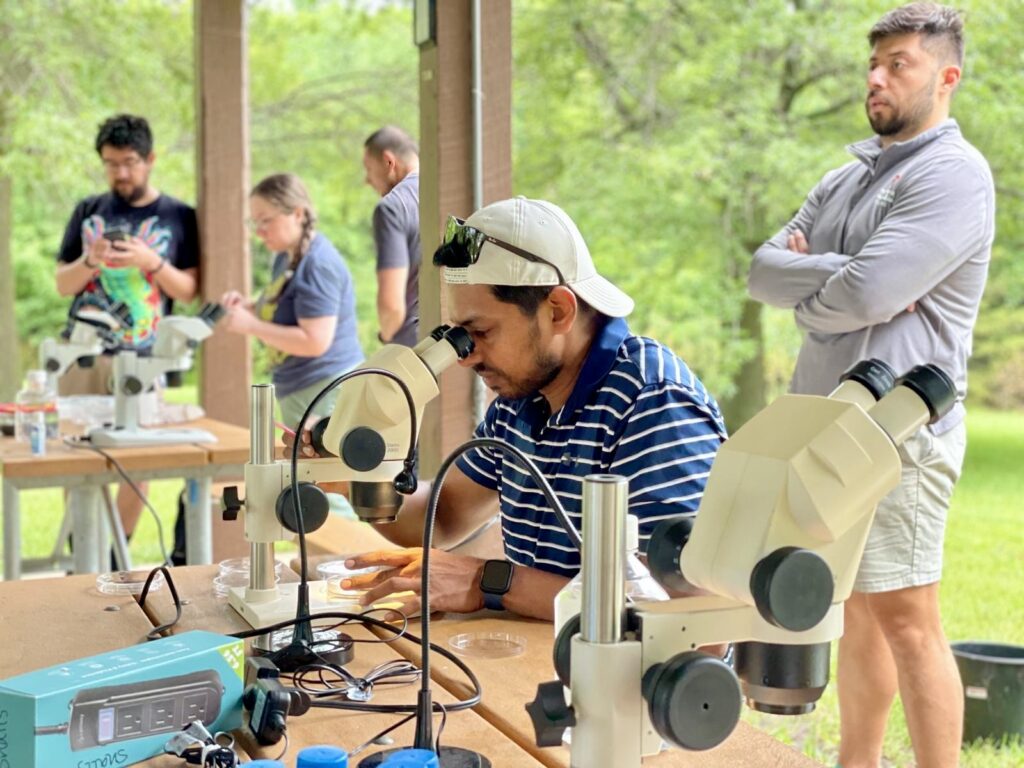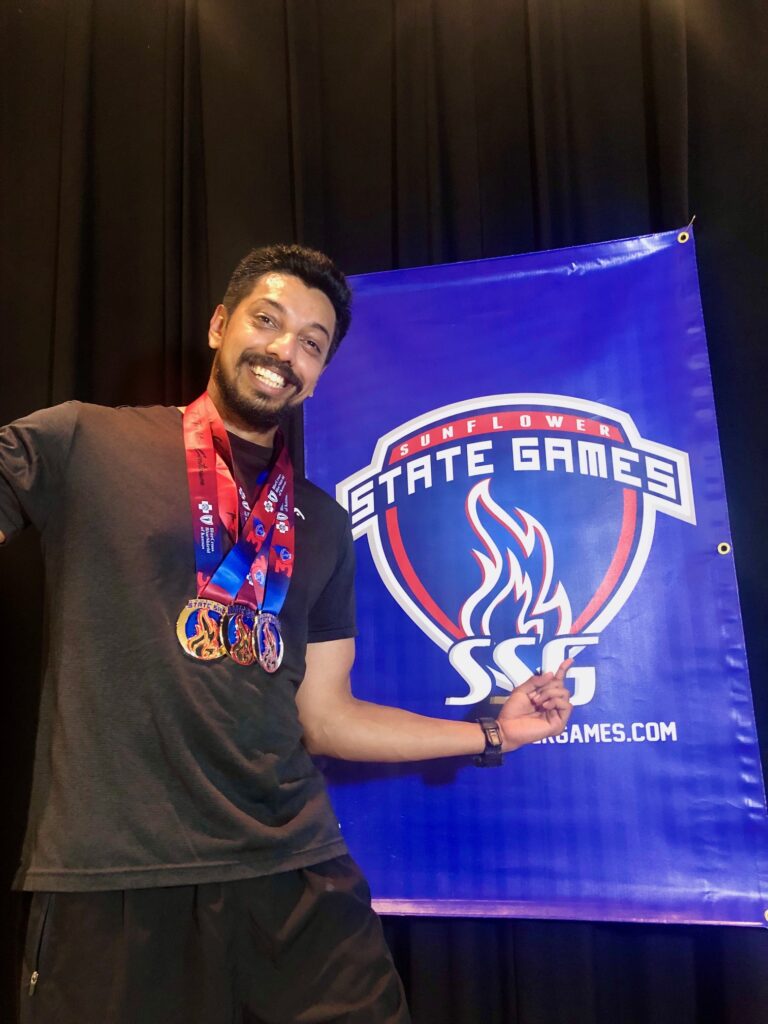Hi, Anand. Tell us about yourselves!

I am Vidyanand Sasidharan aka Anand. I am a postdoc in the Sánchez Alvarado lab at Stowers Institute for Medical Research, USA. I am originally from Thiruvananthapuram, India, and currently settled in Kansas City, USA. I completed my PhD under the mentorship of Dr. Dasaradhi Palakodeti at inStem, Bangalore, India.
Can you tell us about your research and what you do right now?
I am a regeneration biologist; I work to understand the modes of cell-cell communication during animal regeneration. The functional integration of old tissue with new tissue focuses on understanding the mechanisms underlying the successful communication between newly regenerated and pre-existing tissue during regeneration. Researchers study various experimental models, such as planarians or in vitro tissue culture systems, to study the integration process through cell-cell communication. These models allow us to investigate the cellular and molecular events during the integration process, aiming to uncover the signaling pathways, cell-to-cell interactions, and extracellular matrix dynamics involved.
I examine how regenerating tissue communicates and interacts with neighboring cells and tissues to establish functional connections. My postdoctoral research focuses on understanding one such phenomenon: extracellular vesicles (EVs). EVs are bilayered lipid membranes released by cells, known to carry and transport various biomolecules. I demonstrated that planarians could modulate the packaging of biomolecules based on the physiological conditions in which they grow. I identified several proteins, small RNAs, and other molecules required for regeneration packaged inside planarian-isolated EVs. My study also unveiled the mechanism of dsRNA-derived siRNA transport in planarians via EVs. Overall, studying EV biology could help us further understand modes of cell-cell communication in regenerating model systems.
That’s interesting! Why did you choose regeneration biology as your field of research?
Regeneration biology is captivating as it unveils nature’s remarkable ability to heal and restore. It explores how organisms, from fishes and salamanders to planarians, can regenerate complex body parts while others cannot, offering insights into regenerative medicine and tissue engineering. Understanding the molecular and cellular mechanisms behind this process helps us dig deeper into the question of why certain animals and not all show this remarkable ability. These findings have far-reaching implications for human health and aging, potentially leading to novel tissue repair and organ regeneration therapies. Moreover, studying regeneration biology helps unravel fundamental questions about the evolution and diversity of life, inspiring new ways to harness the power of regeneration to better human lives and the natural world.
As a postdoctoral researcher, what excites you the most right now?
Scientists have been working on planarian biology since the late 19th century, and we still have a lot of unknowns yet to be explored. I am always astonished to see planarian head regeneration and dissociated hydra cells aggregating to form a new body. Studying regeneration provides insights into fundamental biological processes, evolution, and cellular plasticity. My work mirrors a game of chess, where each move unlocks many opportunities and possibilities. My findings help me advance my research area and bolster my confidence in fostering collaborations, mentoring young scientists, and honing my leadership abilities. Each day presents fresh learning opportunities, and being surrounded by brilliant, industrious colleagues further boosts my self-assurance.
Why are you a member of InSDB?
I wanted to connect with scientists and researchers working in developmental biology in India and gain access to resources that would aid in advancing my research, especially by attending conferences, workshops, one-on-one discussions, etc. Overall, being a member of an InSDB would allow me to stay connected, informed, and supported within the field, ultimately enhancing my professional growth and impact.
And, what’s one thing that you want InSDB to do?
I would like to see InSDB organize trainee-run scientific conferences. These meetings are crucial for fostering the development of young researchers. They offer unique opportunities for networking, presentation, and leadership experience. These events empower trainees to take ownership of their scientific community, cultivate interdisciplinary collaborations, and contribute to advancing knowledge in their fields.
Where do you want to see the indian devbio community in the next ten years? What are some of the changes that should happen?
One caveat to pursuing developmental biology is the need for more funding opportunities. I want more funding opportunities for young and senior researchers to pursue their passions. We need to organize more outreach activities showcasing the application of developmental biology. So, even though some folks might see developmental biology as just another academic subject, it’s actually super important for society. This makes us rethink how we fund science. Right now, money seems to flow more toward research directly benefiting clinical science or industry. But we should remember that fundamental research, like what happens in developmental biology, sets the groundwork for all those big breakthroughs down the road.
Finally, what is a fun fact that people probably don’t know about you?
I am a national-level basketball player who dedicated his entire college life to sports, not studies. But fate rerouted my career to something better.

You can connect with Anand here.





